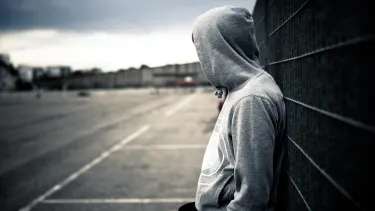This article is designed for readers interested in understanding the gender Differences in Depression, particularly focusing on boys. It aims to provide insights into how depression manifests differently in boys compared to girls and explores the unique challenges they face. Readers will benefit from gaining a deeper understanding of the nuances surrounding depression in boys, fostering empathy, and promoting more effective support systems.
Introduction
Depression, a silent and often misunderstood struggle, affects individuals of all ages and walks of life. While the discourse around mental health is gaining traction, there’s still much to uncover about how presents itself differently across genders. In this article, we embark on a journey to delve into the gender differences in depression, with a particular focus on boys. By shedding light on the challenges they face, we aim to promote awareness, understanding, and effective strategies for addressing depression in boys.
Understanding Gender Differences in Depression
Depression is a complex and multifaceted mental health condition that can manifest differently in various individuals. It’s important to recognize that gender plays a role in how depression is experienced and expressed. Boys, in particular, often face unique challenges when it comes to recognizing and addressing their emotional well-being. While depression is characterized by feelings of sadness and hopelessness, boys might not always exhibit these emotions outwardly. Understanding these differences is crucial for providing appropriate support and intervention.

The Masked Suffering: Boys and Depression
Societal expectations and norms around masculinity can contribute to boys masking their depressive symptoms. From a young age, boys are often taught to suppress their emotions and to be tough and stoic. This can lead to a situation where boys internalize their feelings, putting on a brave face even when they’re struggling internally. The pressure to conform to traditional ideas of masculinity can create a barrier to acknowledging and addressing their emotional pain.
Beyond Sadness: Unique Signs of Depression in Boys
Depression in boys may not always manifest as persistent sadness or tearfulness. Instead, it can manifest as irritability, anger, and even physical symptoms. Boys might become more irritable than sad, expressing their emotional distress through frustration and aggression. Physical complaints such as headaches, stomachaches, and fatigue can also be indicators of depression in boys. Recognizing these signs is crucial for parents, educators, and healthcare providers to provide timely intervention.
Navigating Silence: Why Boys Struggle to Seek Help
One of the significant challenges boys face when dealing with depression is the reluctance to seek help. Societal norms that discourage boys from expressing vulnerability or asking for assistance can create a barrier to seeking professional support. Boys might fear being labeled as weak or different if they admit to struggling with their mental health. This fear of judgment can prevent them from reaching out and receiving the care they need.
Conclusion
Depression doesn’t discriminate; it affects individuals of all genders, backgrounds, and ages. Yet, recognizing and addressing the unique challenges that boys face is paramount to fostering a society that values mental health for all. By understanding the gender-specific nuances of depression in boys, we can create environments that encourage open dialogue, emotional expression, and a genuine acceptance of vulnerability.
As we conclude our exploration of gender differences in depression, particularly focusing on boys, let’s remember that each individual’s journey with mental health is deeply personal. By lifting the veil of stigma and offering a supportive hand, we can pave the way for a future where boys feel empowered to seek help, express their emotions, and navigate the complexities of their mental well-being.




